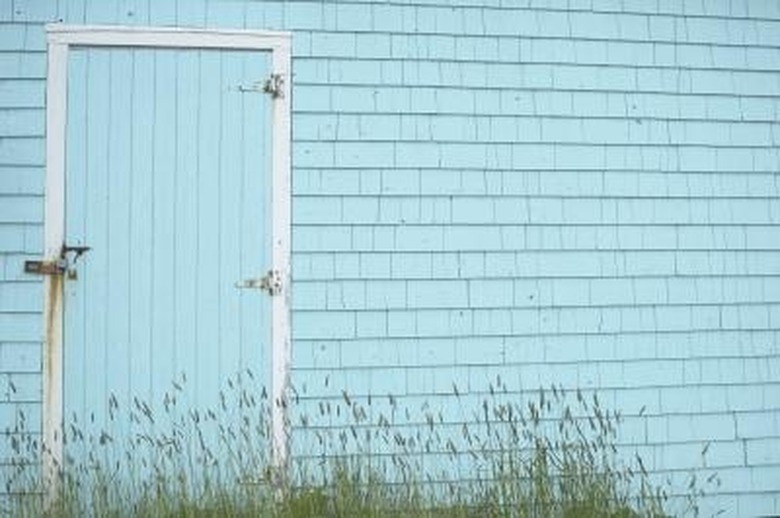How To Depreciate A Shed
Things Needed
-
Purchase price
-
IRS form 4562
-
Business expenses
-
Business income
-
Percent of time used for personal use
Tip
In order to depreciate a shed, you must own the shed. If you rent or lease the shed, you can not depreciate it on your tax return.
There is more to depreciation than what is listed in this article, consult IRS publication 946 to learn more about depreciation on your income taxes.
There are ways to speed up depreciation; the best guaranteed way to figure out depreciation to maximize your benefits is by hiring an accountant. A certified public accountant (CPA) will be able to help you get the most benefit from a depreciation deduction and can offer tips on which methods to use.
Warning
A shed can only be depreciated for tax purposes if it is purchased for business use. Personal use sheds can not be depreciated on taxes under IRS guidelines unless the shed is also used for business uses. If this is the case, the percent of time the asset was used for personal use must be deducted from the purchase price to arrive at the amount allowed for depreciation.
Depreciation is a business expense deductible on your income taxes. A shed, when used for a business purpose, can be depreciated according to the Internal Revenue Service (IRS) guidelines. If the shed is only used for personal uses, depreciation can be taken for your personal accounting records, but will not be tax-deductible. Additionally, depreciation only affects capital-gains taxes on the sale of the asset when it is allowed by the IRS.
Step 1
Print IRS Form 4562. This is the form that you will fill out and mail in with your income tax return if you are claiming depreciation as a business expense on your tax return.
Step 2
Gather applicable data. You will need the basis of the shed to depreciate. The basis is the cost of the shed plus any improvements made to the shed since it was placed in service. Additionally, you will need to know the date the shed was placed in service as a business asset. If you are using depreciation for personal records, use the date the shed was purchased.
Step 3
Determine the depreciation useful life. This is determined based on the type of shed you have. If your shed is large enough to store a vehicle and has a drive of sorts leading up to it, it is classified as a garage for depreciation purposes and has a useful life of 25 years. If it is attached to a foundation, the foundation is classified as a capital asset and has to be depreciated separate from the shed. If the shed is used as a garden shed and is not a permanent structural building, meaning it could be moved if necessary, then the useful life is 15 years. If the shed is a permanent building used for a farming business, it would be a useful life of 20 years. The useful life is based on the purpose of the shed, and the permanency. To best determine the useful life, consult Publication 946 or an accountant.
Step 4
Calculate your depreciation rate per year. If you have a typical garden shed you likely determine the useful life to be 15 years. Using the straight-line method of depreciation, which is the most straight forward, you will depreciate 6.67 percent of the basis of the shed each year for 15 years. If the useful life is different than 15 years, you find this value by dividing 100 by the useful life.
Step 5
Calculate your yearly depreciation expense. This would be the basis multiplied by the percent of depreciation taken each year. For a shed costing $2,000 you would find the yearly depreciation expense by multiplying the rate of 6.67 percent by 2000 to get $133.40.
Step 6
Fill in the values on Form 4562. If you are taking the expense on your income taxes, you will use the values from Form 4562 on another part of your tax return depending on what the expense was related to. If it was a business expense it is claimed on the Schedule C, a farm expense is the Schedule F. Consult a tax professional if you are unsure where to claim the depreciation expense.
